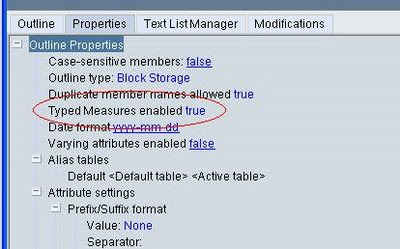First I did a search for the term "smartlist" in the DBAG for 11.1.1 and strangely it turned up nothing. I tried a couple of other terms and was also stumped so I turned to EAS to see if one of the sample databases had smart lists implemented. I found that none of them do but did find a clue:

The outline properties tab shows a property called 'Typed Measures enabled'. Above is a screenshot from an outline I created to test 'Typed Measures'' which, obviously, must have the 'Typed Measures enabled' property set to true. I also noticed the next tab:

The 'Text List Manager' is where you create and manage the values returned for a Typed Measure. Here is the list I created for my simple test outline:

The next step was to assign this text list to a member. I added it to the 'Product' member of my outline:

I then went to Excel and input some data on the 'Product' member. I input 6, 8 and 10 which mapped to 'Moderate', 'High' and 'Exceptional' satisfaction as it was my understanding that Essbase stored the value and displayed the text upon retrieve.

By the way, did you note the subtle difference between the missing text string '#Missing' on the 'Support' data cells and the 'Missing' string from the Text Measure o the 'Product' data cells? In any case, I got an error when I did a lock and send:

Instead, I had to enter the appropriate values from the 'Text List' in order to send:

Now that I have a simple cube that supports Typed Measures to work with, I can go back to the Java API and see more detail on how it works under the covers. I may post a followup showing that later.